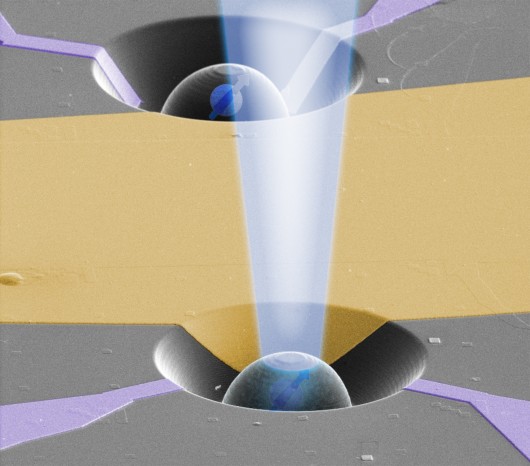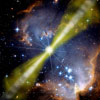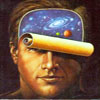In Brief
NASA scientists are investigating how entangled particles can behave like parts of one system. Their experiment has implications for cryptography and information transmission.
Quantum Mechanics
It’s possible for particles to be so intimately linked that, even when separated at a vast distance, a change to one particle can affect the other. This intimacy is referred to as entanglement.
Entanglement is described by quantum mechanics—a branch of physics that looks at the workings of particles at the subatomic level. Quantum mechanics posits that the properties of particles at this incredibly small scale rely on probability.
Scientists have sought to study the quantum world for decades. Albert Einstein, among others, thought that there must be some hidden variables that allowed quantum systems to be more predictable. John Bell presented the idea that for such a system with hidden variables to exist, one particle must have instantaneous influence on another particle.
As NASA notes, “While Einstein proved that information cannot travel faster than the speed of light, particles can still affect each other when they are far apart according to Bell.”
This theorem is an essential foundation in the study of quantum mechanics, and only recently have scientists been able to run proper tests of the experiment that Bell needed to prove it. Last year, three independent studies on quantum mechanics were consistent with Bell’s predictions.
Krister Shalm, a physicist with the National Institute of Standards and Technology (NIST) at Boulder, Colorado and lead author of one of the three studies, calls it “experimental philosophy.”
“Humans have always had certain expectations of how the world works, and when quantum mechanics came along, it seemed to behave differently.”

Ties That Bind
In their study titled “Strong Loophole-Free Test of Local Realism” published in the journal Physical Review Letters, Shalm’s team show that Bell’s idea was correct.
Francesco Marsili from NASA’s Jet Propulsion Laboratory said that “any model of the world that contains hidden variables must also allow for entangled particles to influence one another at a distance.”
Their study showed that when two photons are entangled and separated – at a distance of 185 meters (607 feet) in their test – they behave as if they are still part of one system. This phenomenon of entanglement persists when the experiment is repeated with varying pairs of entangled photons.
The reason why this is such a big breakthrough is that quantum mechanics opens the door to faster and more secure communications. “Right now we have the Deep Space Network to communicate with spacecraft around the solar system, which encodes information in radio signals,” said Marsili.
“With optical communications, we could increase the data rate of that network 10- to 100-fold.”
“Information can never travel faster than the speed of light—Einstein was right about that. But through optical communications research, we can increase the amount of information we send back from space,” Francesco Marsili said. “The fact that the detectors from our experiment have this application creates great synergy between the two endeavors.”
So a bizarre, mysterious, often overlooked property of objects on a subatomic scale could just be the key to our conquest of that vast world that awaits beyond the Earth’s cradle.






